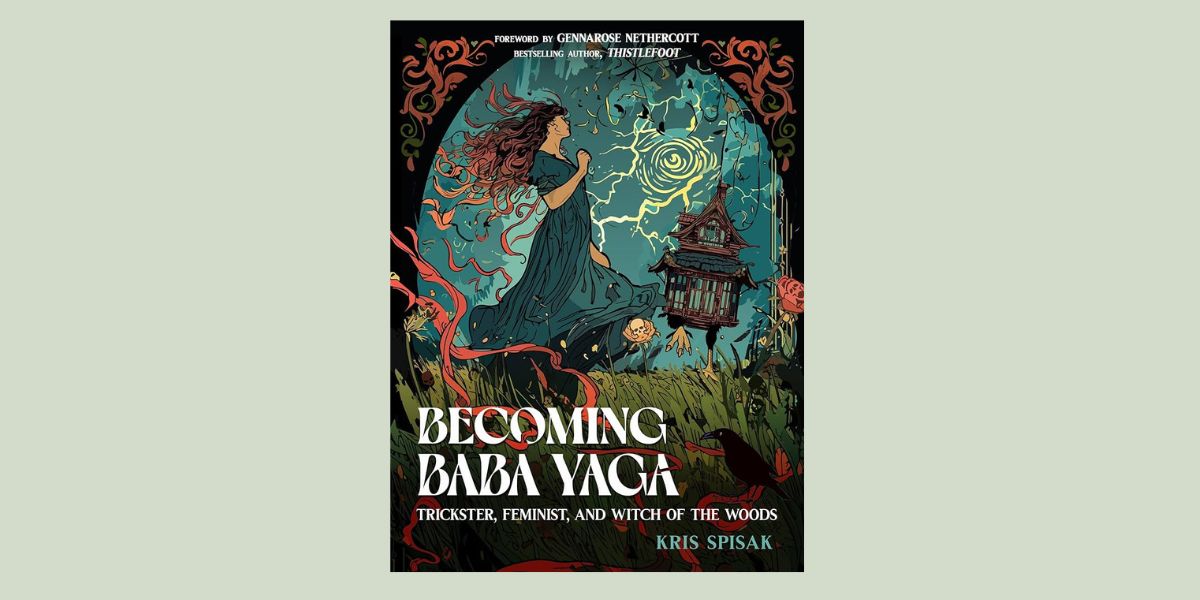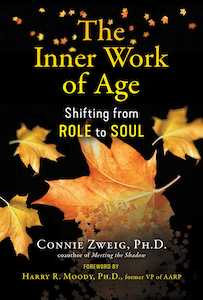
Becoming Baba Yaga: Trickster, Feminist, and Witch of the Woods, by Kris Spisak
Hampton Roads Publishing, 1642970514, 224 pages, September 2024
In Becoming Baba Yaga: Trickster, Feminist, and Witch of the Woods, Kris Spisak seeks the elusive roots of the Slavic crone goddess Baba Yaga in the dark forest of history. Following the trail of her iconic chicken-legged hut, Spisak tracks her transformation from ancient folklore to the present day, exploring her dual nature as both trickster and protector, and her evolution from a fearsome hag to a complex symbol of female empowerment.
Kris Spisak’s award-winning debut novel, The Baba Yaga Mask, was woven from the ancestral red thread of her family’s Ukrainian diaspora experiences following World War II. Her other works, such as Get a Grip on Your Grammar and The Novel Editing Workbook, are geared towards helping writers perfect their craft. Spisak holds a B.A. in English from the College of William and Mary and an M.L.A. from the University of Richmond. Becoming Baba Yaga is her fifth book.
A talented wordsmith with an impressive literary background and an intimate knowledge of Slavic folklore, Spisak spins lush, captivating prose that will leave readers spellbound by the magic of Baba Yaga. Interspersed throughout the book are retellings of traditional stories featuring the enigmatic hag, followed by insightful critical analyses that unravel the rich symbolism and hidden meanings woven into these folktales.
One of my personal favorites was “The Birth of Baba Yaga,” also known as “The Tale of the Twelve Nasty Women,” which recounts how the Devil collected a bag full of difficult, shrewish women and boiled them in a cauldron, inhaled a lungful of the garlicy steam, and spat out Baba Yaga.1 This folktale was no doubt the misogynistic attempt of a Christian author to demonize and oppress her, but I can’t help but be delighted by the idea of Baba Yaga being a distillation of the nastiest feminist women the Devil has ever met.
Like any good fairy tale collection, Becoming Baba Yaga is decorated with beautiful, whimsical illustrations. The work of Davezilla, the creator of the Tarot of the Unexplained, graces these pages. His distinctive black and white artwork, reminiscent of silhouette portraits in an Art Nouveau style, are a lovely complement to the book’s exploration of Slavic folklore.
From Baba Yaga’s lolling tongue and iron teeth to her chicken-legged hut, encircled by fence posts of bones topped with skull lanterns, Spisak explores the symbolic significance of her character and attributes. For example, Spisak offers the intriguing theory that the strange image of the chicken-legged hut may have originated in an ancient Russian burial practice reserved for shamans.
“After death, a wooden coffin was constructed and raised up on stilts, allowing the deceased individual to exist between the sky and the earth, between the planes of life and death, not returning the body to the dirt from whence it came,”2 explains Spisak.
Spisak suggests that Baba Yaga may have originally been an earth goddess, perhaps an elderly Mokosh, the Slavic mother goddess and weaver of fate, who has lost her fertility but retains her wise blood. “Different scholars have linked many figures to Baba Yaga’s origin over time, but each one is rooted in nature and the earth, its potential and its duality,”3 Spisak says. Just as nature is two-faced, both nurturing and destructive, so too is Baba Yaga. Her complex personality, with its blend of kindness and cruelty, is so compelling because it mirrors the multifaceted nature of humanity.
Baba Yaga echoes the behavior of my own grandmothers, who were both loving and cruel in their own ways. Their deep-seated beliefs about what was right and just could sometimes lead to harsh judgments and criticism, just as Baba Yaga rewards well-behaved children who meet her standards, and threatens to cannibalize those who don’t. This reminds me of how elders often demand that we conform to their expectations, and if we fail to do so, they may seek to control or even destroy the parts of us they perceive as rebellious. This metaphorical act of cannibalism can be seen as an attempt to absorb us back into themselves, rather than allowing us to grow and develop as independent individuals.
My paternal grandmother is a hypercritical Virgo with a sharp tongue. In retrospect, I realize that with her iron gnashing, she was trying to eat the parts of me she didn’t like, which seemed to be pretty much everything about me. In her presence, I felt pressured to conform to her expectations by wearing a mask, and stuffed the real me deep into my shadow, until I reached a breaking point and realized that, no matter how hard I tried to please her, nothing I did would ever satisfy her, and I cut ties with her altogether.
However, Baba Yaga is a goddess, not a fallible and judgmental human being. Although her methods may seem cruel, they are intended to awaken the hero within. Spisak points out that Baba Yaga never follows through with her cannibalistic threats. She just has a way of “scaring people into being a better version of themselves.”4
It’s often overlooked that, as a grandmother, Baba Yaga’s role is inherently maternal, albeit as a dark mother, or an evil fairy godmother. All the children that come to her are fed and given shelter, and, in exchange, they are expected to work for her and prove their worth by doing impossible tasks.
“She challenges them to ensure arrogance and entitlement are never pieces of their personality,” Spisak says. “She gives them the freedom to discover themselves and their own abilities.”5
This frightening initiation process serves as a catalyst for personal growth and awakens their latent potential for greatness. According to Spisak, “a good villain makes us reexamine who we are, who we’ve been, and who we could be.”6
One of my favorite chapters, titled “Horror & Escapism,” explores how Baba Yaga continues to captivate our imaginations due to humanity’s enduring fascination with horror and the terror of nightfall in the untamed wilderness. By vicariously meeting the cannibal witch in the woods through folktales, false fear can provide cathartic release.
Spisak says that the horror genre “can evoke an emotional catharsis and establish greater bonds in our own relationships or between characters we empathize with as we consume their stories.”7 This is why date nights often involve cuddling while watching scary movies, and it’s no coincidence that so many horror flicks take place in a creepy cabin in the woods. “Where the darkness stretches out its claws, there we find the essence of Baba Yaga,”8 Spisak writes, emphasizing the enduring power and primeval allure of this sinister goddess.
Spisak’s Becoming Baba Yaga is a masterful exploration of the Slavic crone. Through her insightful analysis and vivid storytelling, Spisak paints a compelling portrait of Baba Yaga as a symbol of both female empowerment and the embodiment of the dark side of nature that continues to horrify and fascinate humanity on the primal level. The book’s vibrant blend of scholarly research and imaginative retellings of traditional folktales make it a fresh and valuable contribution to the study of Slavic mythology and a fascinating read for anyone interested in folklore, feminism, and the enduring power of storytelling.

Rachel Christina McConnell is a witch, tarot reader, intuitive astrologer, and writing spider. She holds an MFA in Fiction from Columbia University in the City of New York. Her short stories have appeared in Dark Moon Lilith Press and Minerva Rising Press’s The Keeping Room. Links to her publications are available here: https://rachelchristinamcconnell.wordpress.com


